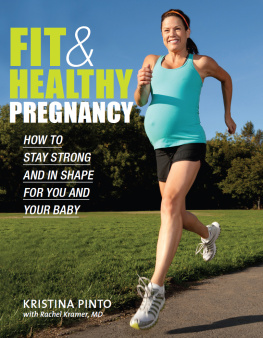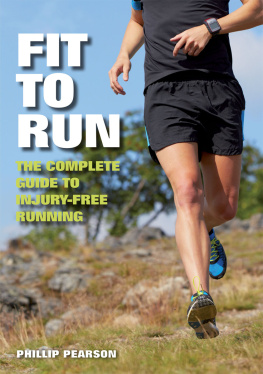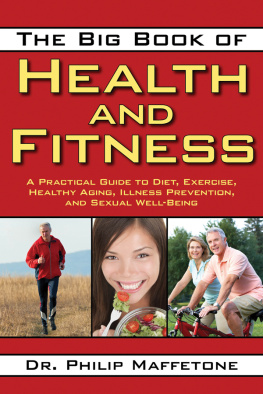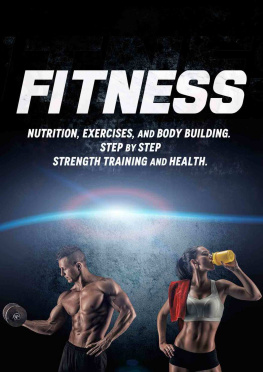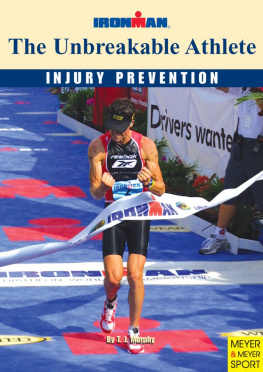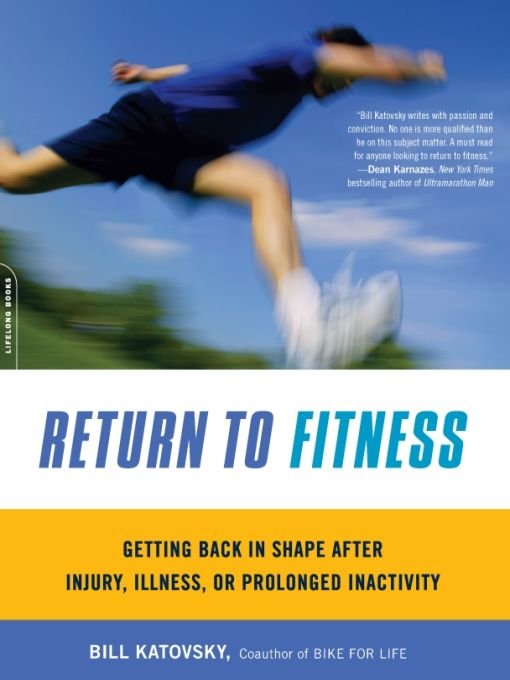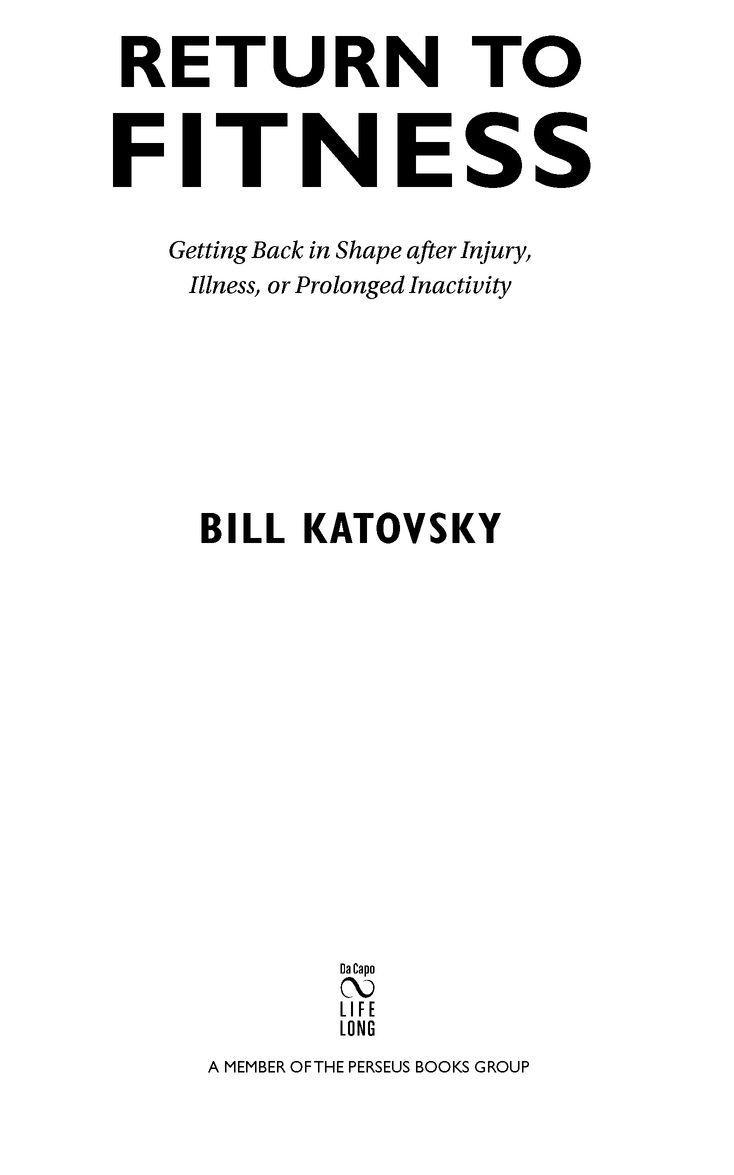Table of Contents
PRAISE FOR BILL KATOVSKY:
A great, funny page-turner that you simply dont expect... Its packed with excellent advice on training, diet, and injury prevention... [and] the anecdotes and biographies are so enjoyable and well-told that I came away both enriched by newfound fitness knowledge and by the people I met in the book and the examples they set.
Michael Frank, Deputy Editor, Bicycling and Mountain Bike
Bike for Life could be the most important book in your life. This informative and entertaining read gives solid advice and soaring inspiration for riders of all abilities.
Sal Ruibal, USA Today cycling writer
What a great book!... The concept of using cycling to stay young is being proven by the stars and regular folk interviewed in Bike for Life and many thousands more every day. To ride a century when you turn 100 can and should be everyones goal after reading this book.
Steve Boehmke, Mountain Bike Hall of Fame inductee
ALSO BY BILL KATOVSKY:
Embedded: The Media at War in Iraq
(with Timothy Carlson)
Bike for Life: How to Ride to 100
(with Roy M. Wallack)
Patriots Act:
Voices of Dissent and the Risk of Speaking Out
The World According to Gore:
The Incredible Vision of the Man Who Should Be President
(Editor)
Iron Heart:
The True Story of How I Came Back from the Dead
(by Brian Boyle with Bill Katovsky)
To Phil Maffetone
who showed me the way back
INTRODUCTION
Ilooked up at Mount Tam, its East Peak poking out of the clouds and mist, and then reflexively turned away. Instead I stared down at the muddy ground, feeling deep shame and embarrassment. Yes, I had been to the top of this revered San Francisco Bay Area mountain. Many times, in factrunning, biking, hiking. That was all in the past, but memories mocked the present. I now existed near Tams bottomemotionally and physically. I had betrayed more than just the mountain; I had been disloyal to my body. As I walked the few hundred yards back home, I asked myself, Will I ever make it to the summit again?
I was not the same young buck who could run for several hours on the mountain or who twice finished the Hawaii Ironman or who biked solo across America in his early twenties. In the space of several years right after I turned forty, Id look in the mirror and be shocked to see this middle-aged stranger staring back. I felt like a victim of identity theft. Who was that imposter with a receding hairline, protruding gut, and mini-man boobs? Whatever happened to the hard-bodied college grad who successfully auditioned to become a nude model for a drawing class at Lake Tahoe Community College because the female art instructor needed a muscular-looking male?
I had once been a multisport athlete regularly drawn to the addictive rush of endorphinstrail running, swimming from Alcatraz, snowshoeing, adventure racing, kayaking, backpacking, mountain biking, road cycling. Then my athletic world collapsed. The decline didnt happen all at once, but was the direct consequence of a steady erosion of motivation that ended in my losing all interest in exercise. Apart from taking one- or two-mile walks every now and then, I saw little point in working out. It was much easier to remain slothful and indolent.
I didnt break a sweat for nearly a decade. Muscles dissolved. My body went softer than Silly Putty. I started wearing baggy clothes to cloak an increasingly pear-shaped physique. Being sedentary worsened my depression. Even though I didnt smoke or drink, and I was only about twenty pounds overweight, it was soul-shattering to discover how unfit I had become. One Christmas morning, as a grim yet perverse experiment to see how far I had fallen, I decided to go jogging. Gasping, lurching, and rubbery-legged, I went one hundred yards before stopping. There was no more gas in my tank. I was forty-nine years old.
Throughout this inactive period, a pesky inner voice kept insisting, Stop making excuses and start exercising! But the plea went unheeded because I first had to liberate myself from all the jostling inner demons intent on snuffing out resolve and desire. Only when I finally made a conscious decision to get back in shapeand then put that thought into actionwas I able to reverse the physical meltdown.
Return to Fitness is a memoir of my struggle to reclaim a semblance of my expired athleticism. It is also a guide to help others learn how to recapture their former fitness, or become fit for the first time. These complementary aspects are braided together with the hope that my journey and the knowledge Ive picked up along the way will serve to inspire and educate. Because fitness is a moving target, defined by natural ability, age, temperament, and self-discipline, the information found in these pages can apply to anyone who once abandoned exercise, whether it was a precipitous freefall or a more lackadaisical slide.
The precise reason for your layoff is immaterial. As is how many years youve been idle. You might have played high school and college sports, but then work and family responsibilities took over your life. Instead of being able to play hoops or soccer, you get winded climbing stairs or taking out the trash. Or you might have once been a recreational or competitive runner, but an injury caused you to leave the sport.
Yet youd love to return to that earlier more vital and athletic phase of your primeonly you dont know how or think its too difficult to achieve. Trust me, it isnt. Ive been there.
As pitiful as my own fitness decline was, it was not irreversible. The entire healing or rebirthing process to get back in shape took nearly two yearspunctuated early on by various extended periods of illness and injury. Once I was healthy enough for consistent, unimpeded training, it required six months before I began to feel like a jock. Of course I wanted speedier resultsbut you have to be more tortoise than hare if you want to succeed once middle age arrives.
The fitness gains were dramatic. I lost weight. Muscles resurfaced. I had greater energy. Mornings were brighter. Nights felt calmer. I even physically reconnected with Mount Tam, our estrangement a thing of the past.
As part of my long, slow climb back to an active lifestyle, I interviewed fitness experts and coaches whose instructive insights about diet and exercise were valuable. I spoke with a New York Times health and fitness reporter; a senior exercise researcher at the Mayo Clinic who participated in a deconditioning study; an astronaut who spent five months in space and returned to earth feeling like an old, bedridden man despite running on a treadmill on the space station; a nutritional and wellness guru who trained world-class runners and endurance athletes; and a top sports scientist who tested Lance Armstrong in his Texas exercise lab in the nineties before and after the cycling great had cancer. Each interview opened a valuable window into critical areas of fitness and health.
I also talked with several accomplished athletes whose illness, injury, or change in lifestyle had temporarily forced them to stop working outbut then they successfully bounced back. Represented here are a former Wall Street trader who lost seventy-five pounds and became Hawaiis Fittest CEO; a retired two-time world-champion Hawaii Ironman triathlete with a bum hip that required a bionic partial replacement so he could run pain-free; a Yosemite park employee who broke her spine in a hiking accident and is now back on the trails; and a sixty-seven-year-old business educator whos had six heart bypasses but still backpacks and goes to the gym.


